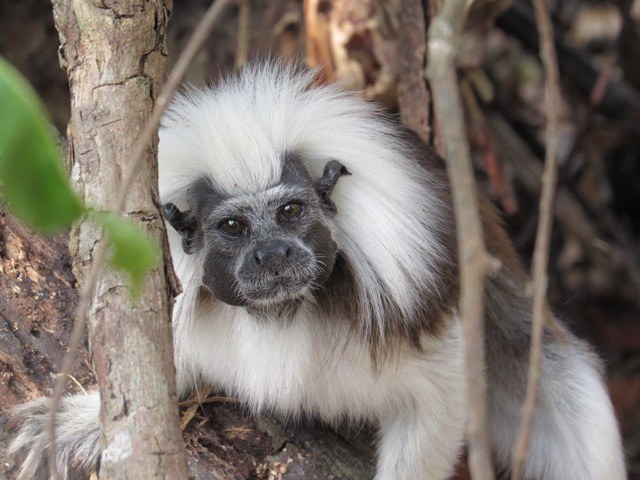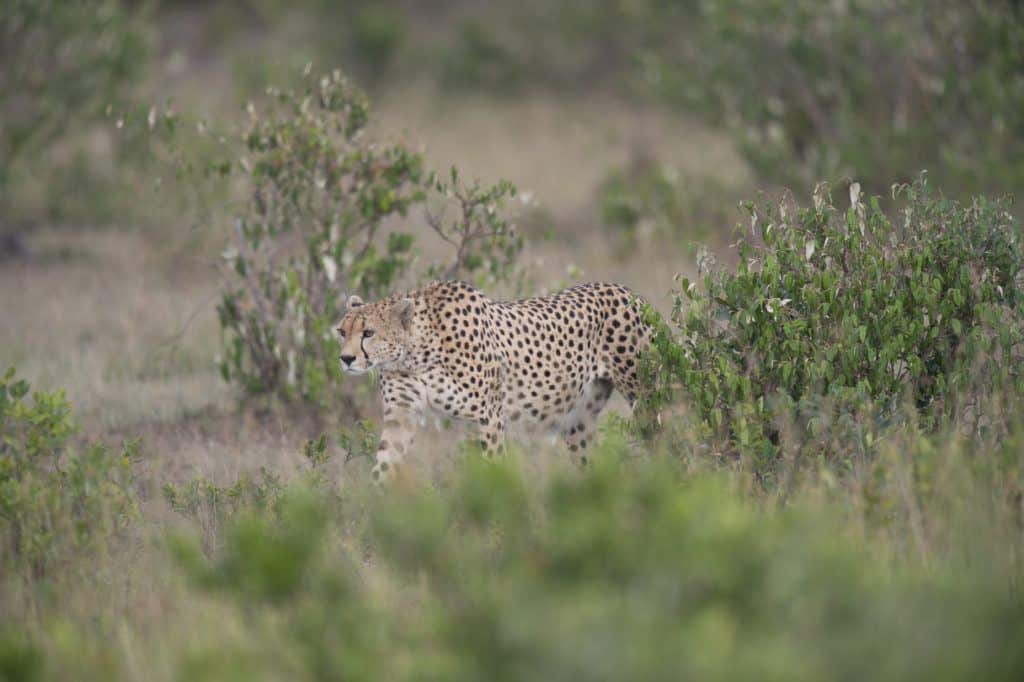
Dark storm clouds start gathering across the sky as Felix, a senior field assistant at Proyecto Tití, glances impatiently at his watch. Soon it will be pouring rain, turning Colombia’s 1,000-acre Ceibal National Forest into quicksand. Felix is eager to get back indoors before that happens. He looks up and follows the movements of a female cotton-top tamarin sitting on a branch of a fruit tree. Felix is keeping his eye on her, hoping to collect a sample of her poop. Eventually his patience pays off and he heads back to the field station with a sample in hand, making it inside just before the rain hits.
Across continents, Jane Horgan of Cheetah Conservation Botswana (CCB) has just finished collecting cheetah scat in the Ghanzi farmlands. Jane is relieved to have found this sample so quickly, as finding scat can involve long hours of travel on unforgiving roads in scorching temperatures. The sample is fresh and she found it easily at a tree where cheetahs commonly mark their territory. Armed with bags of scat, she returns to the field office and puts the samples in the freezer, then washes her hands with disinfectant, twice.

Wildlife poop, or scat, while unpleasant to work with is a veritable gold mine of information, and can be incredibly illuminating to scientists. By analyzing hormones in cotton-top poop, conservationists can map out the reproductive cycles of dominant females, like the one Felix was monitoring. Cotton-tops are most fertile when there is plenty of food to eat, which coincides with the rainy season; so more cotton-tops become pregnant when it’s rainy. Without enough rain, food supply decreases and so does cotton-top reproduction. This is why they are so vulnerable to climate fluctuations.
Similarly, by analyzing hair found in cheetah scat, conservationists can determine what they eat, which is especially critical for their conservation. A major threat to cheetahs is retaliatory killing from farmers as cheetahs are often mistakenly blamed for attacking livestock. Being able to prove cheetahs are not eating livestock by analyzing their scat can help mitigate human-wildlife conflict. For instance, after recently analyzing scat collected from cheetahs in the Ghanzi farmlands, CCB found that only 6% of their diet was comprised of livestock. They were able to share this information with local farmers, thus de-escalating tensions.
Both Felix and Jane will use fecal analysis to make the best conservation decisions to help endangered cotton-tops and cheetahs. It may not be the most glamorous or enviable part of conservation fieldwork, but it’s essential for protecting wildlife.

